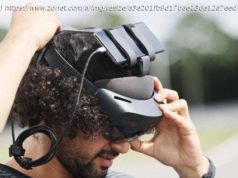In the market for a new mirrorless camera? Make sure you’re getting the newest and niftiest features with our guide.
While DSLRs are still being released, and continue to be popular with enthusiasts and professionals worldwide, these days things are rather more interesting in the mirrorless camera camp.
With Canon, Nikon and Panasonic joining the likes of Sony by launching full-frame mirrorless cameras, and plenty of excellent options from Fujifilm, Olympus and others, mirrorless cameras are not only showing off the latest tech first, they’re also welcoming some very tasty new lenses.
So what should you look for in your next mirrorless camera? We’ve picked out 10 features that make today’s camera’s sparkle. While we’re not suggesting you only buy a camera that only offers all 10, these are the things to look out for if you want to make sure you’re getting the best and most up-to-date technology that will help you capture what you want as effortlessly as possible.
For quite some time, electronic viewfinders were derided by serious photographers. Typically only found in compact cameras, they were tunnel-like, grainy and lacked color accuracy, and were far removed from the glorious optical finders that DSLRs were blessed with.
But as mirrorless cameras started to gain prominence, manufacturers worked on making them bigger, fitting them with higher-resolution panels, and boosting their refresh rate. And today their images are more lifelike than ever.
Right now, the very best electronic viewfinders are the 5.76 million-dot examples found on the Panasonic S1 and S1R cameras, but the 3.69 million-dot units on the likes of the Fujifilm X-T3, Canon EOS R and Nikon Z6 are also stellar. Don’t settle for anything less than 2.36 million dots; aim for 3.69 million, and a magnification of around 0.76x or higher.
Image stabilization is found inside both mirrorless cameras and compatible lenses, and both systems are effective. But sensor-based stabilization is arguably preferable, for a handful of reasons.
First, you benefit from the stabilization whether the lens you’re using has stabilization built into it or not. This means you don’t have to worry about buying a lens with this included (although if you do, on some cameras the two systems will work together, potentially for better correction).
Second, many manufacturers’ mirrorless lens ranges are still developing, so there’s a chance that the lenses you may want to by won’t all have stabilization built in. But if you’ve got it in-camera, you needn’t worry about having it in the lens.
This also allows you to use older, slightly more exotic lenses, which may have been released before image stabilization was even available on such products, via adapters and still benefit from this correction.
The convention for a long time has been for cameras to be fitted with just a single card slot, and that works just fine. So why would you need two?
First, with two card slots on board you can carry on shooting once one memory card fills up. This also gives you the added convenience of being able to leave the first card where it is, rather than needing to remove it and store it safely.






